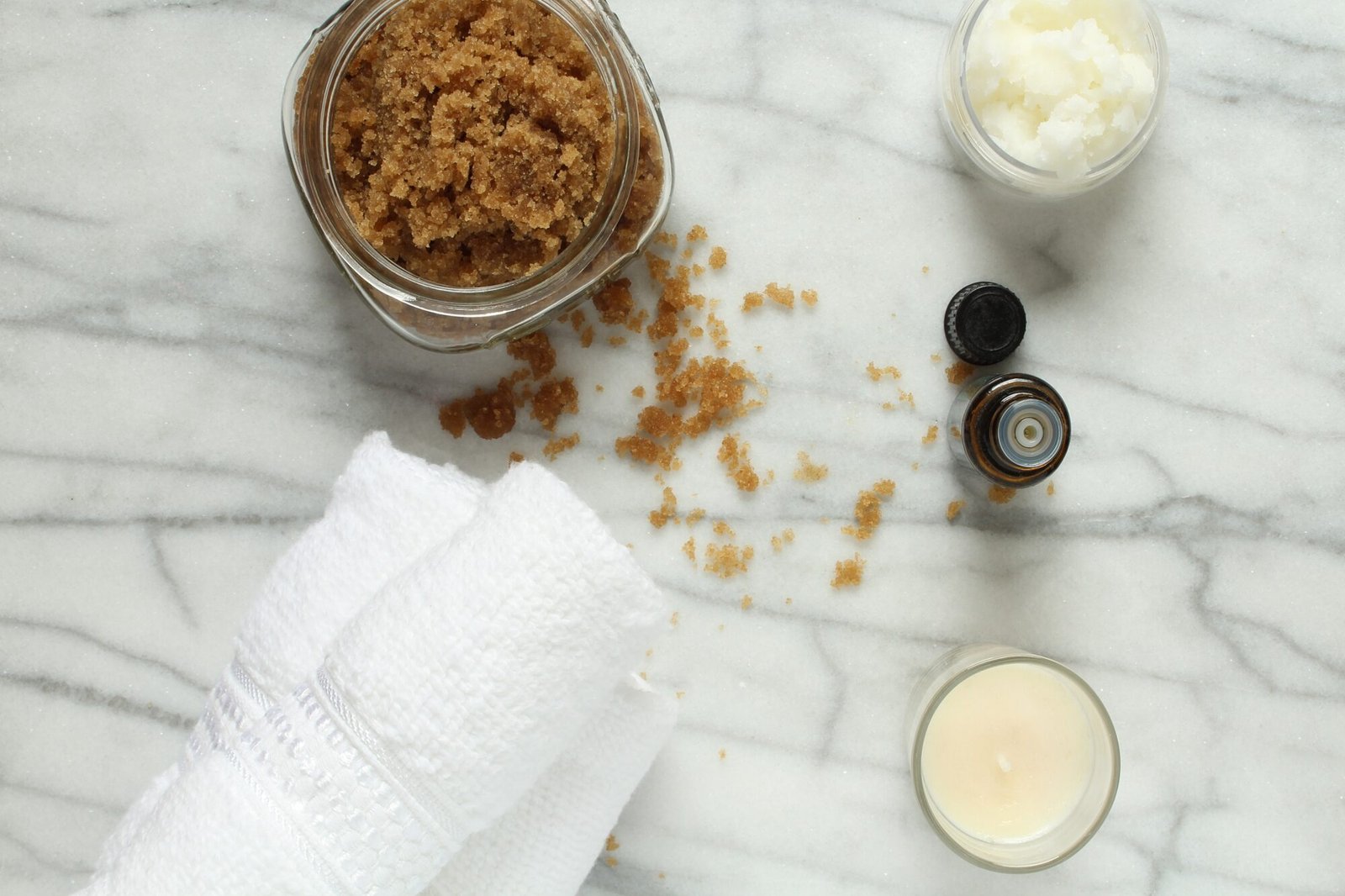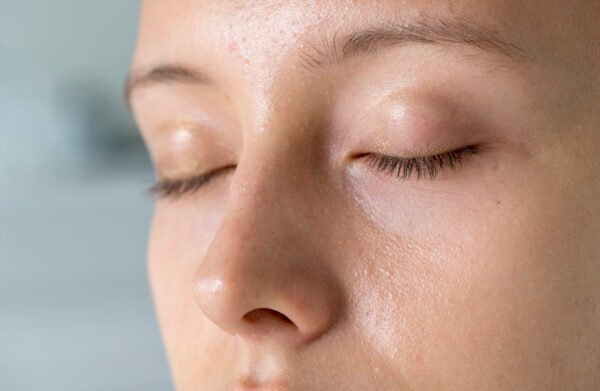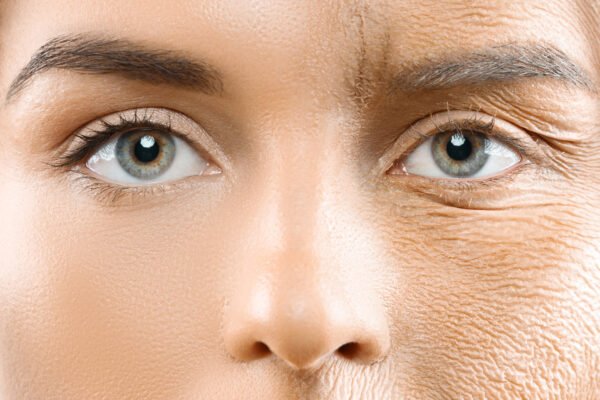Introduction
Exfoliation matters in a skincare routine for dry skin. Dead skin cells are removed to improve moisturizer absorption and avoid plugged pores. Exfoliation also enhances the look and texture of the skin.
Exfoliants are needed for dry skin. Commercial scrubs include harsh chemicals and synthetic exfoliants that dry and irritate skin. DIY scrubs are available. The natural components soften homemade scrubs. They let you customize scrub ingredients and remove harsh chemicals. These natural ingredients may nourish, moisturize, and buff away dead skin, making them mild and efficient.
Understanding Dry Skin
The medical term for dry skin is xerosis, which may affect anybody. This dermatological disorder is caused by dry epidermis. Xeroderma is most noticeable and painful on the face.
Causes of Dry Skin
Several factors can contribute to dry skin, including:
- Genetic predisposition: Inherently dry skin is a problem for certain people.
- Environmental factors: Cold weather, low humidity, and excessive washing without proper moisturizing can strip the skin of natural oils.
- Age: Our Skin produces fewer oils as we age, increasing the likelihood of dryness.
- Health conditions: Dry Skin may result from eczema and psoriasis.
Common Symptoms
The symptoms of dry skin can vary from mild to severe and may include:
- Rough texture: The Skin may feel rough and scaly.
- Itching is one of the most common symptoms associated with dry skin.
- Redness: Skin may appear red or irritated.
- Flaking or peeling: Some skin may flake or peel after washing or touching.
Importance of Choosing the Right Skincare Products
Choosing the right skin care items is essential for people with dry skin to control and ease their symptoms. Using the wrong items can make your skin even more dry, irritated, and damaged. It’s essential to look for goods that:
- Hydrate and moisturize: Products that add moisture to the skin and lock it in are crucial.
- Contain gentle ingredients: Avoid harsh chemicals, fragrances, and alcohols that can strip the skin of its natural oils.
- Support the skin’s barrier function: Look for ingredients that help to repair and maintain the skin’s natural barrier, preventing moisture loss.
Using the right products on dry skin helps control the condition and keeps symptoms from worsening, keeping the skin healthy and robust.
Benefits of Homemade Face Scrubs
For dry skin, homemade face scrubs are superior to store-bought ones. These benefits include saving money and ensuring that chemicals suit each person’s skin.
Cost-Effectiveness and Ease of Making
Low cost is a big reason why DIY face scrubs are so popular. To save money, make your own scrub using sugar, oats, and coconut oil. These scrubs can be made in minutes using basic ingredients by beginners or experts.
Customization of Ingredients
Handmade scrubs may be tailored to each skin type, and moisturisers may be applied to dry skin. Avocado oil offers skin-nourishing fatty acids, while honey is a natural humectant. This personalization ensures the scrub meets your skincare needs and enables you to find the best mix for your skin type.
Assurance of Natural, Chemical-Free Ingredients
Another perk of DIY face scrubs is using natural, chemical-free ingredients. Commercial face scrubs may contain artificial scents, preservatives, and abrasive exfoliants that dehydrate and hurt skin. Making a face scrub may eliminate these dry skin-causing components. Natural ingredients soften and nourish skin without irritation or allergies.
Practical, individualized, natural homemade face scrubs nourish dry skin and complete a good skincare routine.
Critical Ingredients for Dry Skin Care
Making a homemade face scrub for dry skin requires the right ingredients. Each ingredient does something different for the skin, like keeping it wet, soothing, or feeding. Here are some of the best natural products for dry skin and what they do to help.
Oatmeal
Oatmeal is famous for its ability to calm people down. Beta-glucan is one of its chemicals. It makes a thin film on your skin and goes deep into it to provide much-needed wetness. This anti-inflammatory base is perfect for making your face scrubs for sensitive, dry, or itchy skin.
Honey
Honey naturally retains water, keeping skin moist. This natural antifungal ingredient nourishes skin heals minor wounds and protects it from the outside world. Its soothing effects soothe and repair sensitive skin without drying it out.
Yogurt
Yogurt is made of lactic acid, a natural way to remove dead skin cells without hurting the face. Its thick texture soothes and hydrates dry skin, and its probiotics help improve the skin’s natural barrier, making it better at keeping water in. Yogurt makes skin look and feel better and gives it a natural glow.
Avocado
Avocado moisturizes and nourishes skin with its fatty acids, vitamins, and antioxidants. Vitamin E and natural oils enter deep into the skin to nourish, soften, and moisturize it. Avocado regenerates damaged skin cells, making them seem young.
DIY face scrubs with these ingredients may help dry skin. Understanding each ingredient’s qualities lets you personalize your skincare routine to your skin’s demands, keeping it smooth, supple, and moisturized.
DIY Recipes
Adding face scrubs to your skincare routine is easy and works well if you do it at home. Here are three recipes for dry skin, using natural products that clean, soothe, and refresh the skin.
Oatmeal and Honey Scrub
Ingredients Needed:
- 1/2 cup ground oatmeal
- 1/4 cup honey
- 1/4 cup coconut oil
Instructions:
- Combine Ingredients: In a mixing bowl, combine the ground oatmeal, honey, and coconut oil. Mix until a paste forms.
- Apply: Gently massage the scrub onto your face in circular motions, avoiding the eye area.
- Let Sit: Allow the scrub to sit on your skin for 10-15 minutes. This will enable the ingredients to hydrate and soothe your skin.
- Rinse: Wash off the scrub with warm water and pat your face dry with a clean towel.
- Moisturize: Follow up with a moisturizer to lock in the hydration.
- Coffee and Yogurt Scrub
Ingredients Needed:
- 1/4 cup coffee grounds
- 1/2 cup yogurt
- One tablespoon of olive oil
Instructions:
- Mix coffee grounds, yogurt, and olive oil until thoroughly blended.
- Apply: Apply the mixture to your face, using gentle, circular motions to exfoliate the skin.
- Leave on: Let the scrub sit on your skin for 5-10 minutes.
- Wash Off: Rinse the scrub with lukewarm water, removing all residue.
- Hydrate: Finish with a hydrating moisturizer to soothe and protect the skin.
- Sugar and Avocado Scrub
Ingredients Needed:
- 1/2 cup brown sugar
- 1/2 ripe avocado
- One tablespoon of almond oil
Instructions:
- Prepare the Avocado: Smoothen the ripe avocado.
- Add Ingredients: A homogeneous paste is formed by mixing brown sugar and almond oil with mashed avocado.
- Apply: Apply the scrub to your face in circular motions, focusing on dry patches or areas with dead skin.
- Rest: Allow the scrub to sit on your face for 10 minutes to absorb the nutrients.
- Rinse Thoroughly: Rinse your face with cool water and gently pat dry.
- Moisturize: Always follow up with a moisturizer to seal in moisture and protect the skin.
These scrubs make dry skin feel soft and healthy by removing dead skin cells and adding wetness. Regular use can improve dry skin’s appearance and feel.
Application Tips for Maximum Benefits
Use your homemade face scrubs properly and regularly to get the most out of them and keep your skin healthy. Here are some excellent ways to do both.
How to Properly Apply the Face Scrub
- Cleanse Your Skin: Before applying any scrub, make sure your face is clean and free of makeup or dirt. Use a gentle cleanser and pat your skin dry.
- Apply Gently: Use your fingertips to massage the scrub in little circles. Start at your forehead and go downward, emphasizing dry or flaky areas.
- Be Gentle: The key is to be gentle with your application. The scrubbing motion, combined with the natural abrasiveness of the ingredients, will exfoliate. Pressing hard or scrubbing vigorously is unnecessary, as this can damage the skin.
- Avoid Sensitive Areas: Be cautious around the eyes and mouth, as the skin in these areas is thinner and more sensitive.
Frequency of Use for Optimal Results
- Listen to Your Skin: Exfoliation frequency depends on skin type and reaction. Weekly exfoliation for dry skin. This frequency may exfoliate and speed up cell turnover without irritating or drying the skin.
- Observe Changes: Pay attention to how your skin responds after each use. If you notice redness or irritation, you may need to reduce the frequency of exfoliation or switch to a gentler scrub.
- Adjust as Needed: Your Skin’s needs change with the seasons. Your exfoliating frequency may need to be adjusted. Be careful, as winter’s colder and drier weather increases skin sensitivity.
These application guidelines will help you use homemade face scrubs safely and successfully for dry skin. Proper application will keep skin smooth and healthy over time.
Aftercare for Dry Skin
Dry skin needs aftercare, like moisturizing after exfoliating. Moisturize after exfoliating if your skin feels dry or irritated.
Moisturizing After Exfoliation
- Immediate Moisturization: After cleansing, dab your face with a soft cloth. Friction may irritate. Wet your skin and apply a moisturizing cream to preserve moisture.
- Choose the Right Moisturizer: Look for moisturizers rich in hyaluronic acid, glycerin, and ceramides. These ingredients retain water and reinforce the skin’s natural barrier.
- Layering Products: For dry skin, add a moisturizing serum beneath your moisturizer or use a weekly overnight face mask to hydrate fully.
Additional Skincare Practices
- Stay Hydrated: Drinking plenty of water throughout the day helps maintain your skin’s moisture balance from the inside out. Try for eight glasses minimum daily.
- Humidifier: In dry winters, a humidifier may give moisture to the air and prevent skin dryness.
- Sun Protection: To protect your Skin from UV damage, apply sunscreen with at least 30 SPF and broad UV protection. Sunlight may cause skin dryness and premature aging.
- Gentle Cleansing: Choose a gentle, non-foaming cleanser over an oil-removing one. Use tepid water to avoid drying the skin.
- Diet and Nutrition: Fish, nuts, and seeds are high in omega-3 fatty acids, which strengthen the skin’s oil barrier and increase moisture.
If you include these aftercare techniques into your skincare routine, your skin will stay smooth, supple, and moisturized after using your homemade face scrubs. This comprehensive treatment improves skin health, resilience, and surface.
Conclusion:
Recap of Benefits
Homemade face scrubs for dry skin have several advantages over conventional ones. These natural exfoliators deliver healthy and hydrating nutrients. They are inexpensive, chemical-free, and customizable to your skin. Making scrubs may be fun and creative, bringing you closer to the natural components.
Encouragement to Experiment
What works for diverse skin types may not work for Elderly individuals, requiring testing for optimal components. Oatmeal with honey or coffee and yogurt may revive Aging Skin. For seasonal or aging skin, try alternate substances and dosages.
Skin therapy with homemade scrubs is fun, effective, and varied. Try these natural cures for a healthier, brighter, and prettier complexion. Mix skincare in a dish!







